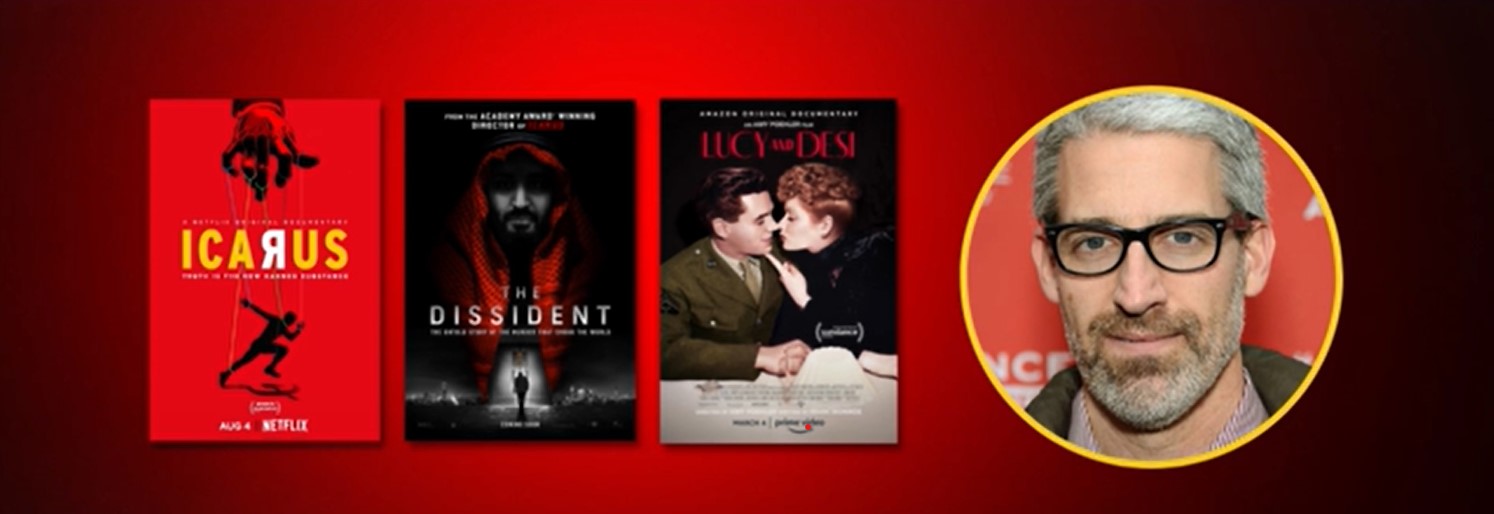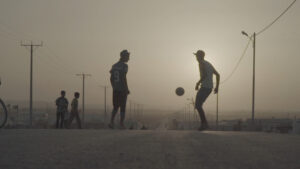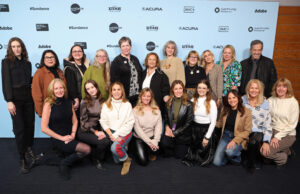By Stephanie Ornelas
When Mark Monroe first got into documentary filmmaking, he didn’t know there was a role for writers. Now, after working as the writer behind Emmy winner Lucy and Desi, he’s sharing a few tips for documentary screenwriters during Sundance Collab’s virtual Master Class: Writing Your Documentary Script.
At the beginning of the immersive online class, Monroe told viewers that he was going to examine and share his own process when it comes to writing a documentary script. It was a free-flowing discussion with Q&As in between. But first, he thanked the Sundance Institute for paving the way to what is now a successful filmmaking career.
“In many ways, I owe a lot of my career to Sundance Institute. I was fortunate to have a film [screen] at the Festival initially, but it has also been the bar, the gold standard that you try to reach every year. It [the Institute] has been a part of my process and my thinking all along the way. So I can’t thank the folks at Sundance enough for the Festival, the labs, Collab, and all that they do in the realm of documentary film.”
A journalism graduate and TV newswriter, he quickly learned that the best documentaries thrive when they have a solid script and a writer who can work well with both the director and the editor.
“I came to Los Angeles after my news career and I was working on biographical documentaries as a freelancer,” recalls Monroe. “We had to be the producer, director, editor, and writer — all of those things in one. I had a skill set where I could write on paper and work through the format that each show had. I could work out the beginning, middle, and end.”
This multi-stage format is something Monroe strongly encourages for writers of documentary scripts. “I would suggest, ‘Let’s go interview these ten people.’ I would do the interviews, then I would take it all back and work with an AP and an assistant editor to gather the archival footage,” says Monroe. “I was not a very good editor, but I could edit, and that’s a good skill set for doc writers.”
Having worked on other award-winners like The Dissident, The Cove, and Icarus, Monroe has learned to work with directors, editors, and producers to craft a compelling story and shape characters that will captivate audiences. “I think the biggest job of writing for a documentary is trying to continually have an intention behind where the film is headed in terms of the process of making the doc. And that means a beginning, a middle, and an end.”
Here are five tips documentary screenwriters and aspiring writers should consider as they gear up for their next project:
1. Be in sync with the director and editor
Collaborating with both the director and the editor of the project is an important role of a documentary writer.
“The writer is a key confidant to both the director and the editor. You’re kind of piecing the two together, making sure that at all times you’re driving towards something. I think a lot of times, especially with young filmmakers, the writer helps keep everyone going in the right direction. That’s why it’s so important to understand the director and the editor and get a clear idea of where they want a particular story to go.”
2. Be prepared to rewrite
Monroe’s writing process has always been to write as much as he possibly can about the film in great detail. The more he can put on the page, the better: “And then I’m constantly rewriting that. As the situation on the ground continues to change, as the story continues to evolve, you’re continually trying to account for that in your process and writers need to be prepared for that.”
3. Start interviewing early
One big lesson Monroe learned early on was how one conversation can really impact a writer’s understanding of a story. It was important for him to interview the director and everyone involved as early as possible — and as often as possible.
“If you have new filmmakers or people who are living the story as it’s going, interview them. Interview them a lot. That’s what I did with Louie Psihoyos (director of The Cove) before we ever did an interview on camera. Then I began pulling soundbites. I just pulled lines from his telling of the story in a very conversational way for me to use in the edit. We can replace the lines later, but this was a foundational way of me understanding exactly what his thinking was every step along the way. It allowed me to see his entire experience from his point of view.”
4. Treat the doc like a narrative
Something to take note of when thinking about making documentary films and writing documentary scripts is to mimic narrative films as much as possible, suggests Monroe. That’s been his process through a number of films he’s worked on. And he drew inspiration from some of his favorite movies, dissecting each character and what role they play in the story.
“Writers should at least give viewers the feeling of narrative films, the excitement of them, whatever genre they might be. Make a turn at the end of the first act that propels you into the second act. All this stuff is very rudimentary. What I did when I was first starting out was I would just take my favorite narrative films and I would break them down with note cards just to see how the characters were introduced: When were they introduced? Why were they introduced there? Where is the end of the first act? And what does that mean for the second act? How late in the film can a character come in and how would I do that? I did this with probably 20 or 30 films,” explains Monroe.
And when it comes to getting to the core of your story, writers should be clear about why audiences will find this story important — and they should do it right away. “Even in narrative films, it’s about how the audience is learning the world. Distill a big amount of information, get to the heart of what it is that matters in the first minute. And in the second minute, the first character should be coming in. It’s all worldbuilding. So when you think of it like that, it’s a little bit easier to process.”
5. Always keep a timeline
It sounds simple, but keeping timelines can be very complex and are crucial when it comes to shaping a story.
“If you’re doing a historical doc, you need a lot of timelines,” explains Monroe. “This way you, as the writer, can figure out what exactly happened and when. It’s just good to see a very detailed timeline so you can relay those events back to the audience. Lucy and Desi was the last [film] I worked on and those are obvious timelines. When it comes to personal timelines like that, I had a timeline just for Desi, I had one just for Lucy, and then I had one Lucy and Desi, just the time they were together.”
Sign up for Sundance Collab to watch the full Master Class and check out the free two-part series, Non-Fiction Interviewing with Marina Zenovich.




